Background:
Several months ago the Mk8 PCV setup was installed on the GTI and the crankcase vacuum was measured for a few different intake configurations using an aftermarket inlet elbow and the stock Mk7 GTI inlet elbow.
These results were checked against bench measurements that include a larger number of inlet elbow options.
Recently the Blaze ATOM Race intake was bench-tested for comparison with previous results and in this post, the Blaze intake is installed in the GTI to measure crankcase vacuum and compare the results with those recorded using the other inlet elbows.
Test Setup:
Fitting the Mk8 PCV to the Blaze PCV port was not a plug-and-play connection due to the position and orientation of the Blaze PCV port compared to a conventional inlet elbow PCV port placement.
On a standard elbow, the PCV port is positioned on the top of the elbow just past the 90-degree bend and points upward.
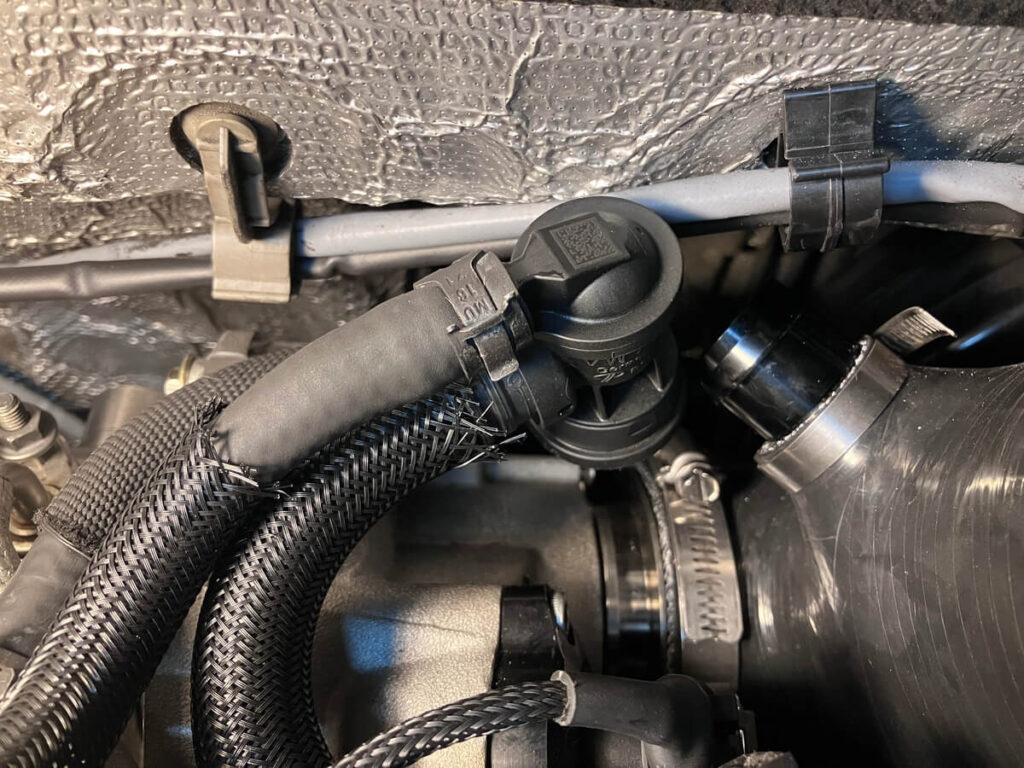
To make the connection a couple of accommodations were made, one involved tilting the Blaze PCV port adapter, and the other was twisting the Mk8 PCV hoses. This combination still made for a tight fit.
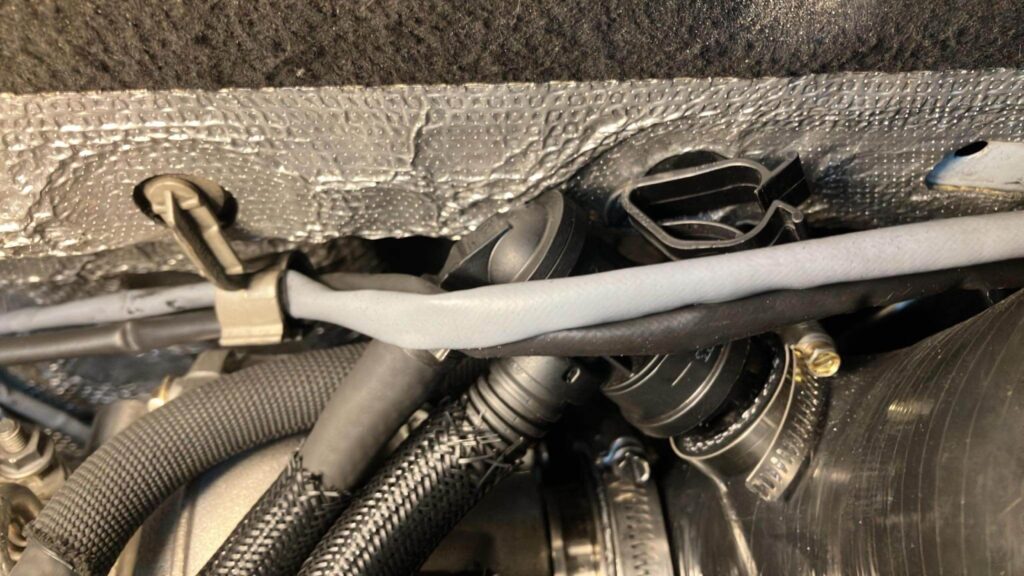
This was a temporary solution that was only used for data collection and after collecting data the Blaze intake was removed.
The Venturi/Suction Jet Pump line (shown connected below) was not utilized during this test, which is the same configuration as the comparison cases, no venturi.
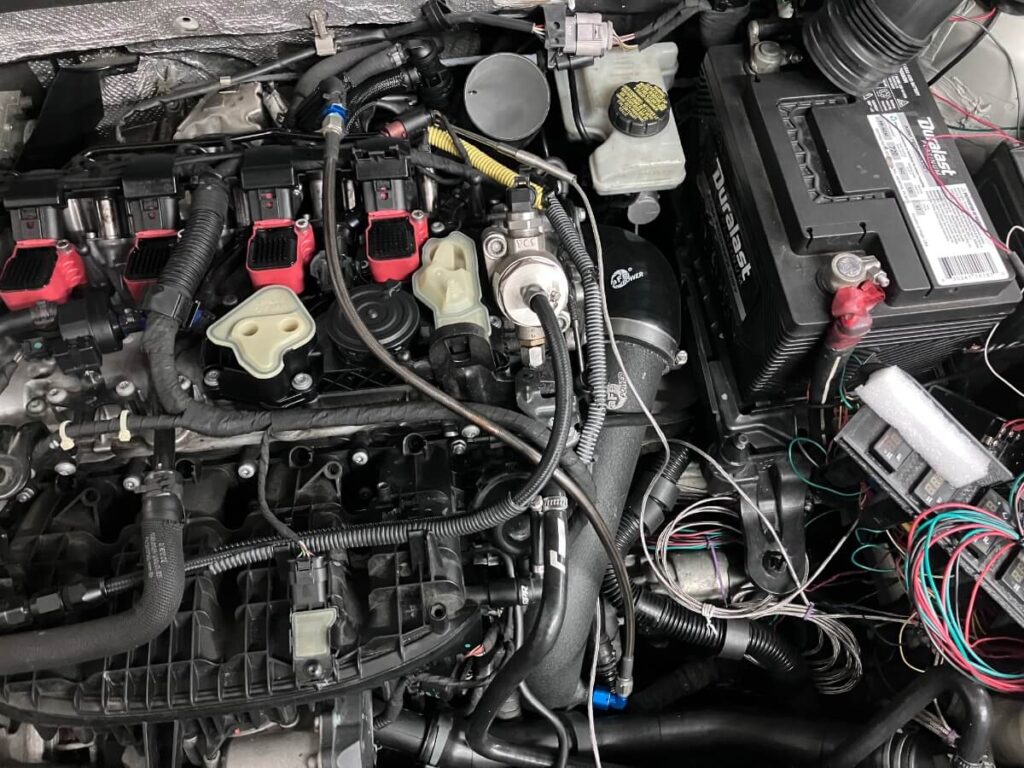
Test Process:
Crankcase pressure is measured at the Oil Cap using a MAP sensor connected to a DATAQ datalogger.
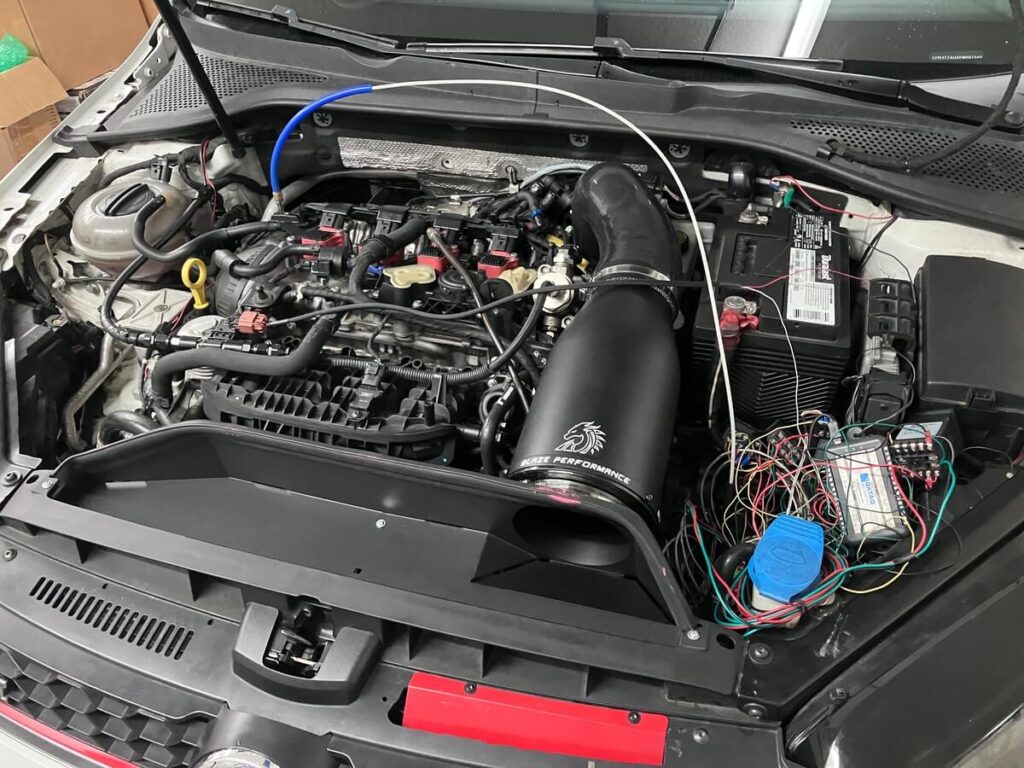
The data of interest is the crankcase pressure during a full-throttle third-gear pull.
A series of pulls were made to collect data that could be averaged.
Test Results:
The first chart shows a single pull of the turbocharger compressor outlet pressure and the crankcase pressure.
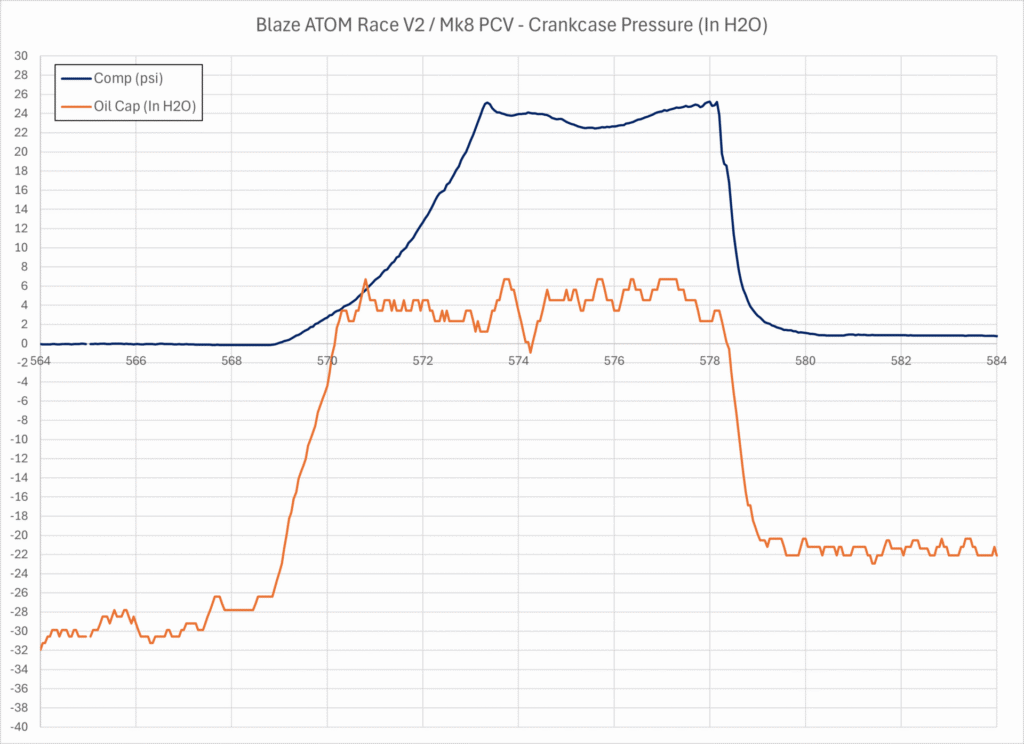
One notable difference with previous data is the boost curve which is slightly higher at the end than it was with the previous IS20 turbo samples since the GTI now has the Mabotech M520h turbocharger installed. This boost pressure curve is generated with an early base tune but still results in adequate airflow for this comparison.
Another notable difference is more evident in the comparison chart.
The next chart shows the average vacuum for multiple pulls compared with an aftermarket TIP and the stock TIP.
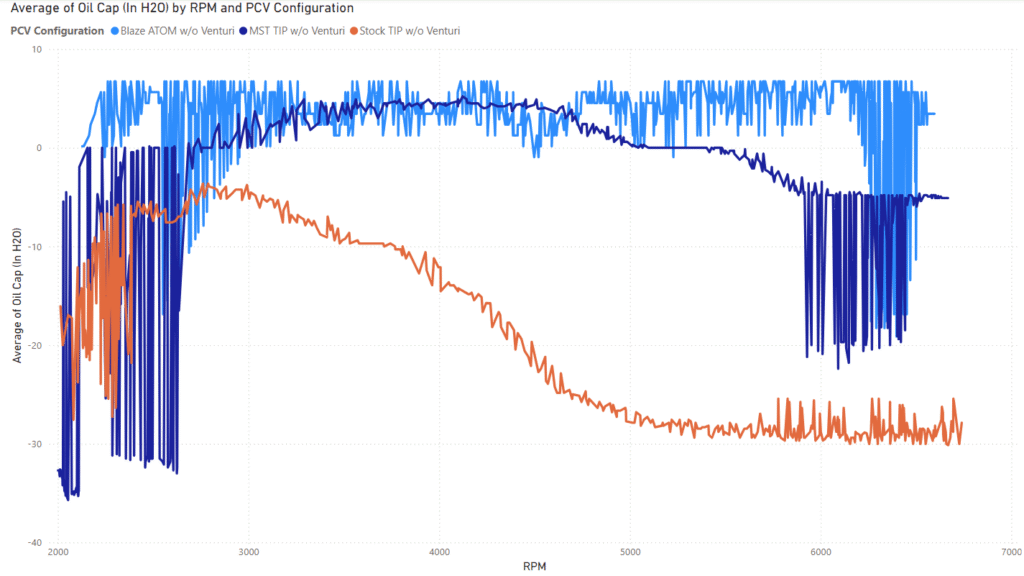
The crankcase pressure becomes positive, similar to the aftermarket inlet elbow, but with the Blaze intake the positive pressure sustains throughout the pull whereas the aftermarket elbow shows a decrease into vacuum toward the end of the pulls and the stock elbow remains in vacuum throughout the pulls.
This is noteworthy since the Blaze intake is operated at a higher boost level which should correlate with a higher airflow into the compressor, which should produce a higher vacuum inside the intake.
As the bench test had shown, the Blaze intake has the lowest vacuum of the elbows that have been bench tested, and this looks to be correlating with the higher crankcase pressure.
Conclusions:
The Blaze ATOM Race V2 intake was installed in the GTI to record crankcase pressure in conjunction with the use of a Mk8 PCV setup minus the Venturi/Suction Jet Pump line.
The crankcase pressure using the Blaze ATOM intake was higher than the aftermarket and stock TIPs that have previously been tested.
This result correlates with bench testing of the Blaze ATOM intake that showed the intake producing the lowest vacuum level at the PCV port of the inlet elbows that have been tested.

More boost from a larger turbocharger can result in more blow-by, which would raise crank case pressure. Seems like an important variable to control for.
Also, doesn’t the decreased vacuum at the breather port show that the intake is less restrictive? If, for example, you attached a more restrictive filter, vacuum would increase?
The boost level would be something to consider controlling. Whether or not it is important would depend on if it is a source of blow-by with this engine that caused a change in crankcase pressure, and if that change was significant enough to produce the differences shown here. I am interested in making the comparison at higher boost pressure, and once the Mabo turbo is tuned I’ll revisit this and be able to make the comparison with a consistent boost pressure.
The location of the Blaze PCV port is prior to the final turn in the inlet hose, that turn is a source of pressure drop, which creates vacuum, so having the port located before the turn will reduce the vacuum at the port. I talked about this in the bench test writeup.
The boost pressure using the Blaze is elevated only briefly at the end of the pull, shown in the chart below:

Very interesting and explains why people have PCV problems on big turbos – usually accompanied by big honking TIPs or intake-TIP combos like this.
Any plans to test this intake with any PCV plates?
I don’t have any plans to buy anything to perform a variation of this test. Once the turbo is tuned, I will look at running through the inlets again just to see how the vacuum compares at 30+ psi.
You’re assuming that the reason is because of the placement of the port. The intake providing less restriction could also explain the lower vacuum reading right?
I’m not suggesting the lower vacuum is 100% attributable to the location of the PCV port, but it is significant. The location of the PCV port places it at a point along the airflow path that has less of a pressure drop than will be found after the final bend. That is not an assumption, that is a result of pipe flow fluid dynamics.
Previous tests made with the Blaze intake using the right-hand drive version of the inlet hose, which eliminates the final bend, showed a sizeable gain in airflow compared with the left-hand drive.
The intake providing less restriction could be a factor in having a lower vacuum, except in this case the Blaze intake has been tested and found to be no better than average in terms of the flow rate through the intake. In fact, in the tests where I tried to minimize the contribution of the elbow, the Blaze ATOM is the lowest flowing intake that has been tested. That should correlate with a higher vacuum at the PCV port, not lower.
What is the effect on vacuum (with a stock turbo inlet) of a performance intake vs stock intake?
Assuming the performance intake causes less of a pressure drop the vacuum should be lower (less vacuum) with it. How much “less” and how much “lower”, I don’t know. I’ve not tried making that comparison, or seen another owner post results of making that comparison.